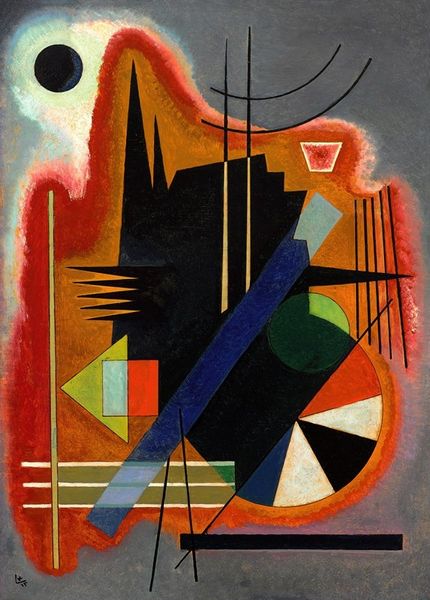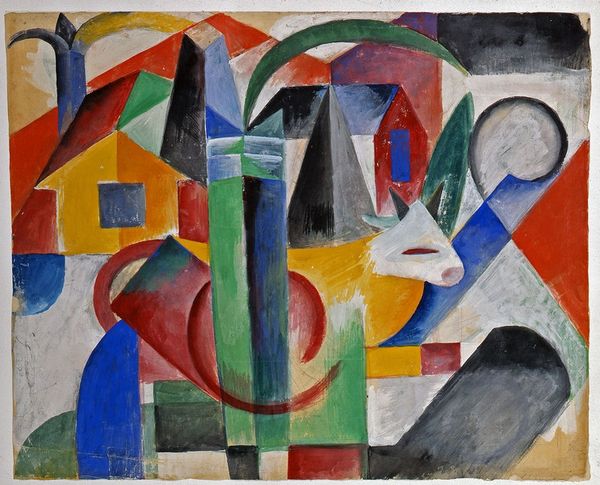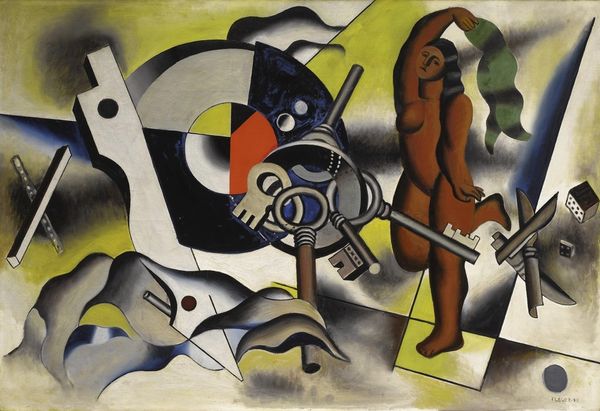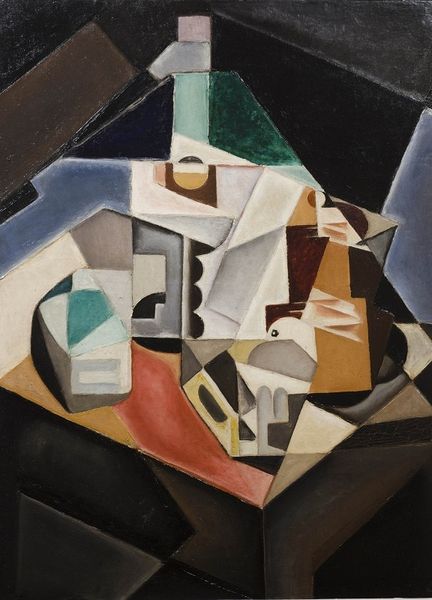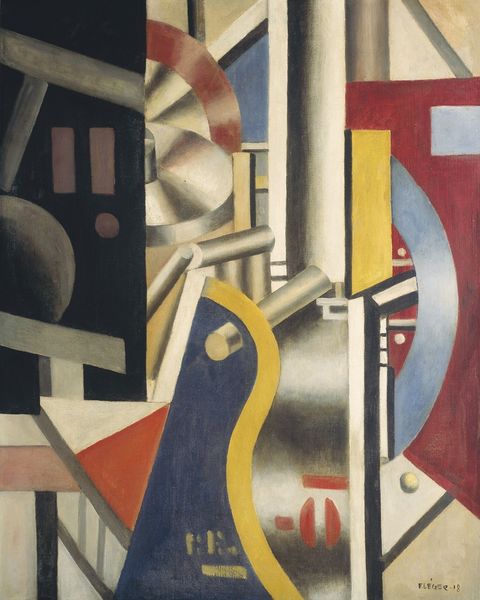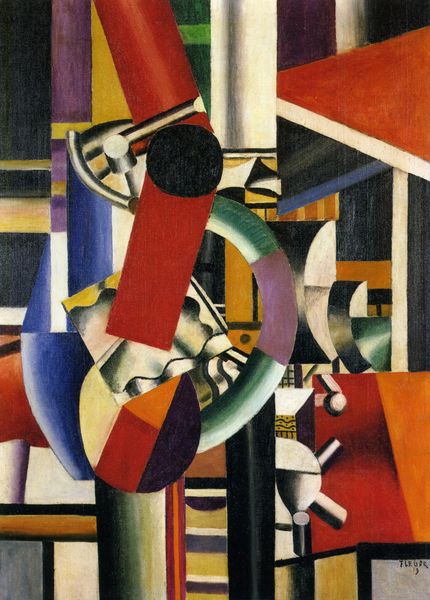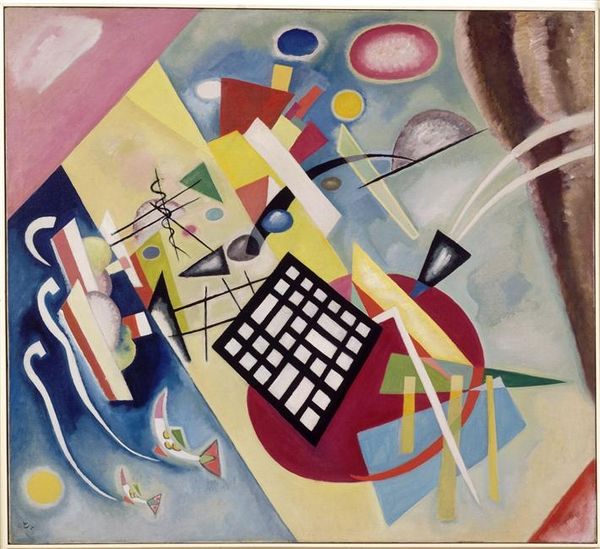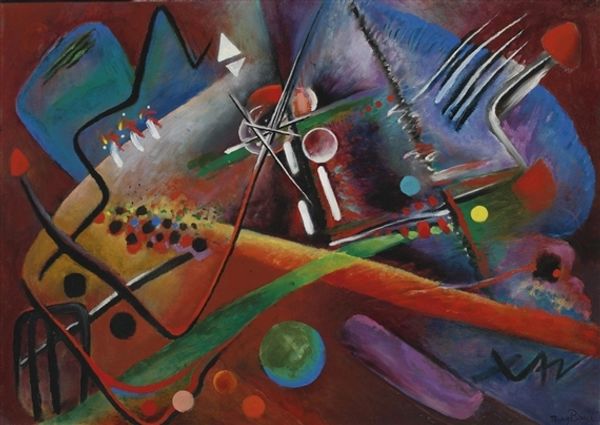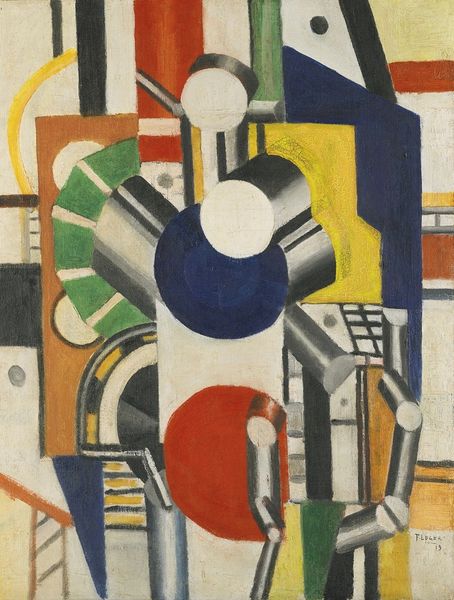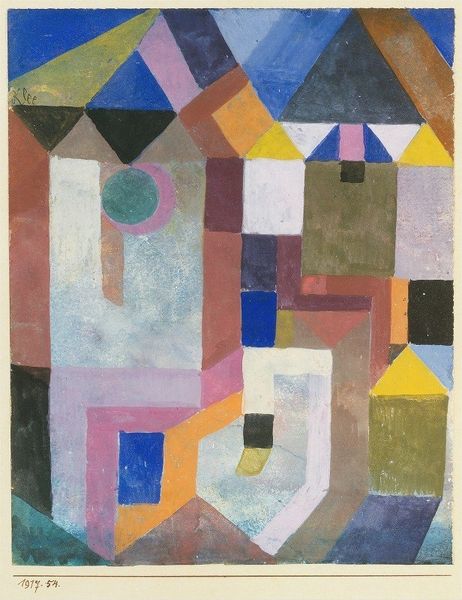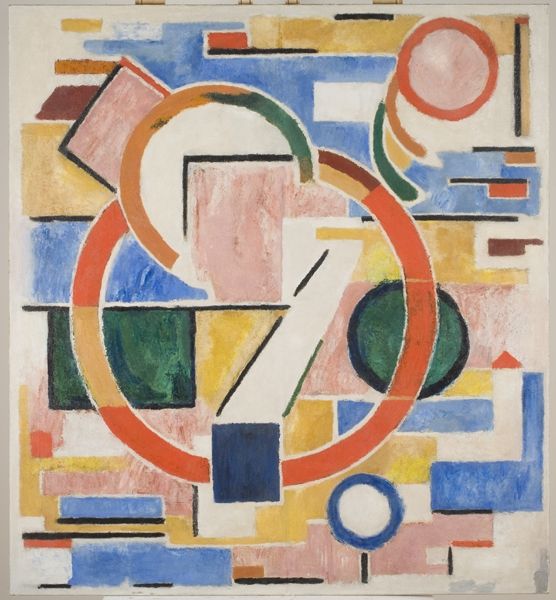
Dimensions: support: 705 x 502 mm frame: 954 x 750 x 80 mm
Copyright: © ADAGP, Paris and DACS, London 2014 | CC-BY-NC-ND 4.0 DEED, Photo: Tate
Curator: Wassily Kandinsky's "Swinging," currently at Tate St Ives, presents us with a cascade of shapes and colors. It’s a fascinating, albeit undated, piece. Editor: It feels playful, doesn't it? Almost like a child's mobile, but one that carries a deeper weight. So many of the symbols seem caught mid-air. Curator: Yes, Kandinsky's use of the circle, for instance, has always struck me as a symbol of completion and spiritual unity. Note how those circles interact with the rigid triangles and squares. Editor: Those sharp edges set against the soft, translucent colors—it's a visual representation of the push and pull between the earthly and the ethereal. The dark orbs, like eclipses, add a layer of mystery. Curator: Absolutely. And thinking about Kandinsky’s synesthesia, I wonder what specific sounds and emotions he intended to evoke with this composition. Editor: Perhaps the sounds of a joyous, albeit slightly chaotic, orchestra tuning up, right before the conductor raises the baton? It is, after all, titled "Swinging". Curator: That's lovely. It's a reminder that abstraction can be deeply emotive and evocative. Editor: It makes me wonder, what inner landscapes are these symbols mapping?
Comments
Join the conversation
Join millions of artists and users on Artera today and experience the ultimate creative platform.
tate 6 months ago
⋮
The title ‘Swinging’ captures this work’s sense of movement. Kandinsky believed painting should aim to be as abstract as music. He worked to create art that was free from all references to the material world. For him, colour in particular was essential for liberating art from representing the visible world. Gallery label, August 2019
